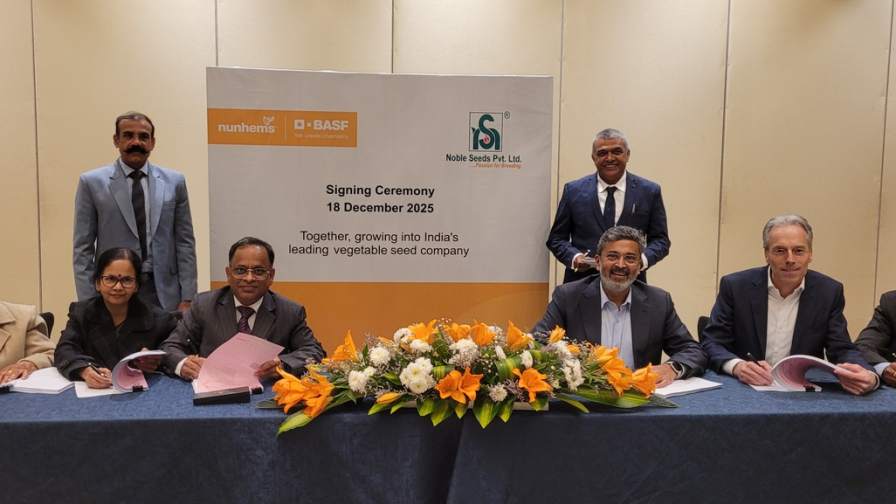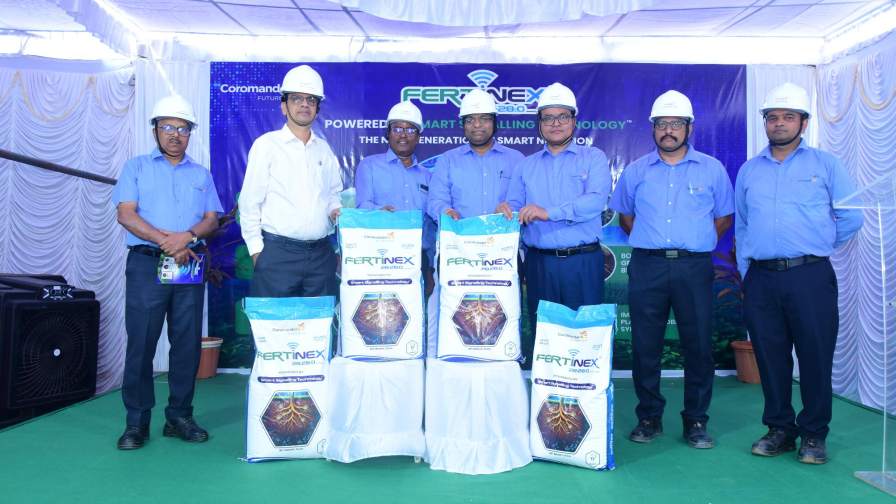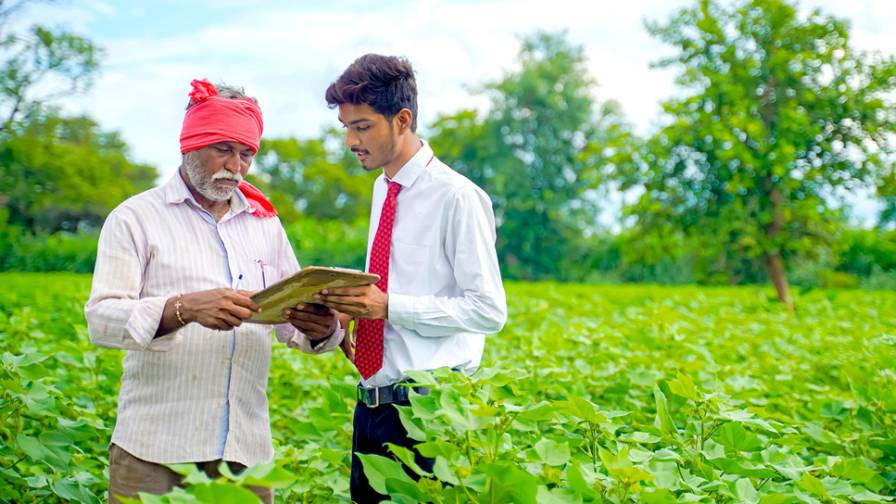How Companies Are Helping Farms Access the Untapped Potential of Soil
Soils are the most complex and diverse ecosystem in the world, and provide humanity with 98.8% of its food.
But soil, as an issue of ScienceDirect journal describes, is a finite resource, and rapid human population growth coupled with increasing consumption is placing unprecedented pressure on soils through the intensification of agricultural production — the increasing of crop yield per unit area of soil.
“I consider soil organic matter to be the most significant soil health indicator, because it plays a primary role in numerous soil functions such as soil structure, water use, nutrient cycling and availability, agrichemical fate and transport, and biological activity and biodiversity,” says Doug Wolf, Environmental Safety Technical Expert at Syngenta. “Soil health integrates physical, chemical, and biological factors that impact productivity, environmental quality, and profit potential.”
Aside from critical environmental factors, soaring energy and fertilizer prices make doing more with less the way going forward, says Jeff Divan, Director of Agronomy with California startup Sound Agriculture.
An overhauled approach to soil health over the last 12 years has transformed his own 1,800-acre corn and soybean farm in Iowa. Divan’s farm began integrating cover crops and switched to a strip-till system, leaving crop residue intact to allow for more efficient field operations, as well as placing fertilizer in and near the root mass and root zone.
“We’ve seen some of the best yields we’ve ever achieved here using some of these strategies,” he explains, including splitting up in-season nitrogen application to three passes — reducing rates all the way down to 0.75 pounds of nitrogen per bushel. Erosion from rain and wind has abated, and “one of the subtle indicators of improved soil health is tons of earthworms when you dig in the soil. We used to do a lot of fall anhydrous (ammonia applications), and the soil looked to be dead from doing that — you never used to see earthworms.”
“We’ve seen improvement in organic matter, and have done Haney tests to see that extractable carbon within the soil has increased,” he notes.
For the past two years, his farm has also utilized Source, Sound Agriculture’s bio-inspired foliar spray, which activates the soil microbes that fix nitrogen in the atmosphere and unlock phosphorus in the soil, effectively manufacturing fertilizer right at the root zone of a plant and reducing the need for nitrogen application by 25 to 50 pounds per acre.
The product has taken off in U.S. agriculture, with sales soaring three times over last year. Other key markets around the globe are next: The company inked a partnership with Syngenta in China last year to trial the product in corn and wheat for about two years and take the product through China’s regulatory process, and it is also looking at use in other crops. The deal aims to cut nitrogen fertilizer use in China by 30% while maintaining yields.
“The opportunity is ripe going forward to leverage the power of our soil, allowing us to cut back on overpriced fertilizer. It should do nothing but strengthen returns,” Divan adds.
MORE TOOLS FOR HEALTHIER SOILS
“Sixty percent of yield is dependent on soil fertility,” Taylor Purucker, Crop Nutrition Lead, Eastern North America with Mosaic reminds. “I think that moving forward, growers will implement soil health practices with the ultimate goal of becoming more profitable.”
A new tool from agtech startup Biome Makers called BeCrop is helping growers in 40 countries understand the needs of their soil by way of a step-up from the typical soil sampling test. BeCrop is the first digital soiltech platform delivering a functional crop specific analysis of the soil microbiome based on its genetic information.
“We are trying to help bridge the gap between a soil microbiome profile as a snapshot from a grower’s farm, and match that with a product that’s been shown to help the areas of the soil that need it,” says Ava Mehrpour, BeCrop Advisor Program Coordinator with the Silicon Valley-based company, which was founded in 2015.
“A lot of times growers may do tissue sampling and see that crops are deficient in ‘xyz,’ and then add more of that, but if it’s not mobilizing or fixed, or it’s being consumed by other microorganisms, the issue is not abundance, the issue is the pathways,” Mehrpour explains. “We help to unlock what is there, and we help to connect with precision what’s missing with what works.” In addition, its BeCrop Rate technology measures the impact of human intervention and provides a score of sustainability to a farm, from D to A-plus.
Valent U.S.A., a subsidiary of Tokyo-based Sumitomo Co., has worked intensely on sustainability for the past five years as it looks to make its own contributions that align with the 17 Sustainable Goals developed by the United Nations, says Mike Riffle, Senior Director of Field Research and Development and a 34-year veteran of the company.
“One of these areas where we can make a direct impact is with our herbicides, both pre- and post-emerge. They enable certain grower practices like conservation tillage,” he says, also noting that Valent’s MycoApply mycorrhizal fungi-based product line helps improve nutrient efficiency, drought tolerance, and protect yield potential throughout the season.
“It’s unfortunate that sustainable has become a buzzword in some areas,” he says. “You don’t necessarily have to say the word — many growers are already using sustainable practices, and there are specific metrics that can be used to measure sustainability.”
Valent is four years into a 10-year soil health study at its Midwest Agricultural Research Center in Champaign, Ill., comparing conservation tillage, crop rotation, cover crops, and mycorrhizal fungi to determine whether carbon and soil health is improving in the plots.
“The thinking is that, and we’re already seeing it, is you can improve soil health and specifically improve the amount of carbon sequestered by using these sustainable practices,” Riffle says, adding, “If you can keep insects and disease off your tomatoes, you can harvest more tomatoes. It may sound simplistic, but if you don’t have these inputs, you harvest less and require more land to harvest the same commodity.”
FACING SOIL-BORNE PEST PRESSURE IN EUROPE
When farmers cultivate the same plants for a long time in the same soil without crop rotations or other agronomic measures, the soil starts to evidence nutritional and phytopathological problems for plants, Arben Myrta, European Development Manager, specialty crops with Certis Belchim tells AgriBusiness Global. This is more evident in horticulture and particularly in protected crops in Europe, where this problem is of major importance, he notes.
In Europe, the level of attention and knowledge on soil health and good soil pest management practices has been higher among those working in horticulture, the ornamentals industry, nurseries, and other protected crops — basically everywhere where long crop rotations are not easily practiced and pest-infested soils become a problem for the farmers, he says.
Myrta, who is based in Italy, has observed the acceleration of bans or limitations of several traditional synthetic products used to control soil pests, which has forced field advisors and farmers to come up with alternative solutions to deal with soil problems. In recent years, for example, European farmers faced more difficulties in controlling plant-parasitic nematodes.
“The biorational products available today in European Union (EU) countries are very good tools for the management of several soil pests in many crops and targets but are still not sufficiently effective to guarantee full satisfaction to growers in important cash crops, which explains why emergency uses are still granted at country level,” he says.
“The continuous increase in the numbers of new biorational products in the future, and particularly the innovative formulations that will follow, will be of paramount importance for their role in soil pest management.”
A second, but important, issue is the generally limited knowledge of soil components — including soil’s fertility and capacity to suppress pests by beneficial microorganisms — and the correct use of biorational products, which cannot be expected to be as quickly effective or used solo, as the old chemicals were, Myrta explains. They should be used in tandem with other soil management solutions, as recommended by integrated production guidelines. However, one major obstacle in Europe is the lack of an effective public extension service to advise farmers as exists in the United States.
“Everybody now in the EU is convinced that soil management in the future will rely on biorational and integrated solutions,” Myrta says, “but the question is how to reach this objective gradually, being pragmatic and reliable, balancing the environmental, economic, and agriculture perspective. Legislation always steers the direction of progress but should be used carefully while considering the real product capabilities to make it happen in a short time and not focusing on emergency situations as has now been the case for more than a decade.”
He adds that the expectation is that positive results will come from public research — more focus on resources is needed — and private industry, which are working to bring to the market new biorational solutions and innovative methods with higher efficacy in controlling soil pests and to fulfill the increasing needs of this market. “But only if regulatory hurdles are being reduced, including for low-risk biorational solutions,” Myrta says.






